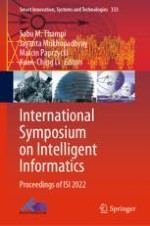2023 | OriginalPaper | Chapter
Unsupervised Deep Clustering and Reinforcement Learning Can Accurately Segment MRI Brain Tumors with Very Small Training Sets
Authors : Joseph N. Stember, Hrithwik Shalu
Published in: International Symposium on Intelligent Informatics
Publisher: Springer Nature Singapore
Activate our intelligent search to find suitable subject content or patents.
Select sections of text to find matching patents with Artificial Intelligence. powered by
Select sections of text to find additional relevant content using AI-assisted search. powered by
